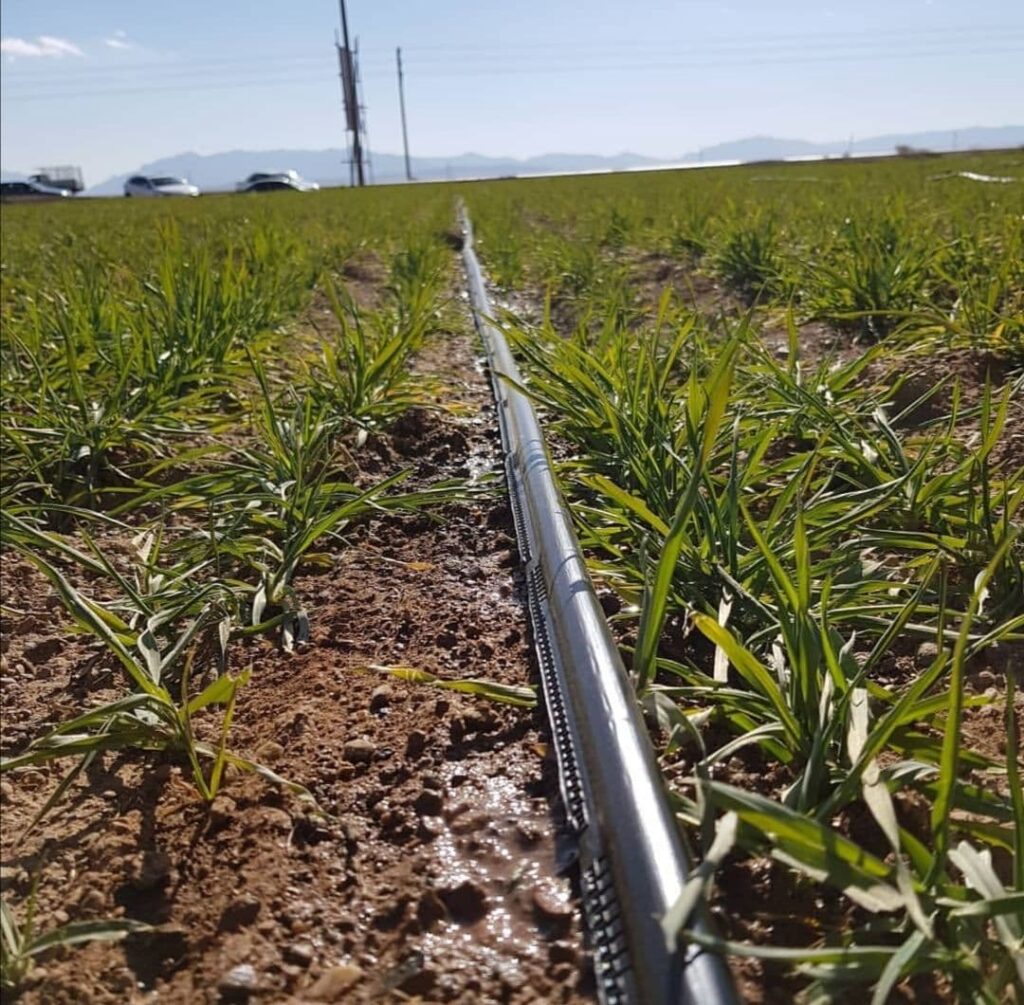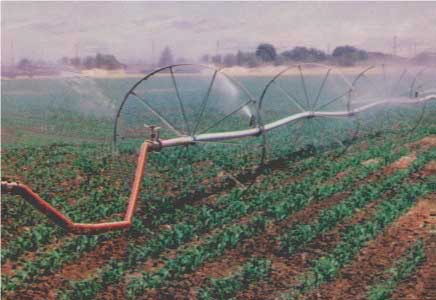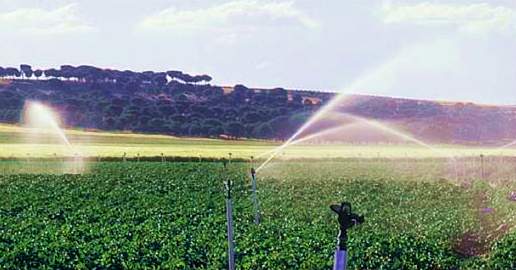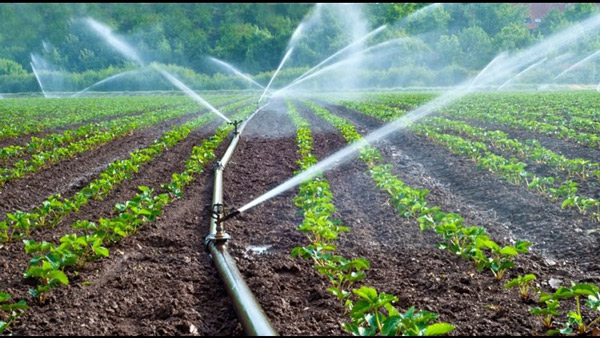1-1-Drip irrigation system
on of a variety of irrigation methods is drip irrigation . The drip irrigation system helps to prevent runoff, evaporation and wastage of water in windy conditions by gradual irrigation.
In this method, drip irrigation pipes are placed side by side with your plants, which you can cover with soil so that it is not exposed. Flow rate and distance between drippers are determined by plant type, soil type and weather conditions. For example, in areas with sandy soils and coarse grains, the distance of the drippers is shorter, while in areas covered with clay, due to the slower absorption of water, the distance of the drippers is longer and the discharge of the drippers is less. The Drip irrigation system targets the roots of the plants ,thereby making irrigation more efficient and also reducing water and electricity coasts . Another advantage of using this irrigation system is its use in hard-to-reach areas or sloping , and it also prevents damage to plants due to excessive flooding.



1-2-tape irrigation system
Irrigation type is made of polyethylene and unlike hard polyethylene pipe, it is almost flat and very soft.
In fact, type tapes have a soft and flexible material that fills when water enters it and water droplets The type is removed through the doors installed on the irrigation strip and after the end of irrigation, the type strip is flat again.
The wall thickness of the type strip is very thin and the distance between the drippers in the irrigation strip is different from the type.
Thicker ones and are usually used for subsurface irrigation of different plants. Irrigation tapes are produced for different methods of drip irrigation (surface and subsurface) and different plants, with a great variety in terms of thickness and distance between the drippers or joints. Our most common type is irrigation tape with a thickness of 200 and 150 microns with watering intervals of 10, 20 and 30 cm. Usually, Iranian irrigation tapes are of seam type and foreign irrigation tapes are of plate type. Plaque-type tape has a dropper, but seam-type tape does not have a dropper, and instead there is a zigzag (zip-like) path next to it that breaks the water pressure so that the droplets come out through the seams and reach the plant, which is called The armpit is famous. The other type has a hole in the strip, known as a seam in the middle.

How many points do you consider necessary in drip irrigation of tape type?
In principle, the strip drip irrigation system should not be used on farms with very hard and salty water.
If necessary, a complete water test must be performed before designing and installing the tape to prevent obstruction prevention methods in the network design.
Fractures (angles) along the entire length of the installed irrigation strip reduce water flow.
This situation is especially noticeable at the beginning of the lines and the distance between the connection of the tape to the 16 mm pipes or in the torn points that have been repaired, which should be controlled and corrected.
In the calculations of water requirement for irrigation, if the water requirement of the crop is underestimated, the root of the plant will penetrate into the outlet of the strip to access water and will cause blockage. Therefore, the environment around the roots should always have enough moisture and the plant’s water needs should be met. If the type irrigation strip is installed under the soil, it is better to limit the farm to one irrigation period to facilitate the collection of the strip so that the soil on the strip is semi-moist and soft. To control weeds, it is recommended that herbicides be used and that weeding workers do not use sharp objects for weeding. Becomes. Spreading irrigation strips over long lengths also reduces irrigation uniformity and ultimately reduces crop yield.
1-2- Wilmo sprinkler irrigation system
one of a variety of irrigation methods is sprinkler irrigation . The system consists of laterals and aluminum tubes located in the center of large wheels with a diameter of one and a half to two meters. This device is one of the semi-mechanized irrigation devices and does not move during irrigation. After irrigation of each part of the field, the lateral pipe is transferred to other parts of the field by a driving force or gasoline engine.

2-2- Pivot Center Irrigation System
This irrigation system consists of a large irrigation wing. Sprinklers are located on it. This irrigation wing is mounted on wheels and rotates around a central axis similar to the clockwise rotation, irrigating the ground in a circle. The irrigation wing consists of several openings arranged on A-shaped towers. Each tower has two large wheels. The radius of the circle under irrigation is equal to the length of the lateral tube.

3-2- Classic mobile sprinkler irrigation system
In this system, the pumping station, main and secondary pipes and wings are fixed in place during the planting season, and according to the need, the sprinklers are connected to the automatic valves by the worker and by the riser in different places and irrigation is done. In this system, the main pipes are buried underground and the side pipes can be buried or surface.

4-2- Classic mobile sprinkler system
All components are transferred from one unit to another after irrigation, the pump moves on the chassis. In this method, which is one of the classic methods, the pipes are made of aluminum, usually their diameter is 3 inches. Suitable pipe is determined according to the maximum allowable length, maximum allowable speed (2.3 meters per second) and the dimensions of the ground. The length of the pipe is usually selected 6, 9 or 12, the material of the removable pipes AL and for fixed pipes PE Consider.

5-2-Constant sprinkler irrigation system
In this method, all components of the system, such as sprinklers, main and secondary pipes are fixed. This method is used to irrigate lawns. Due to the high cost of this method compared to other methods, small-scale irrigation such as parks and urban green spaces and football fields are used.
